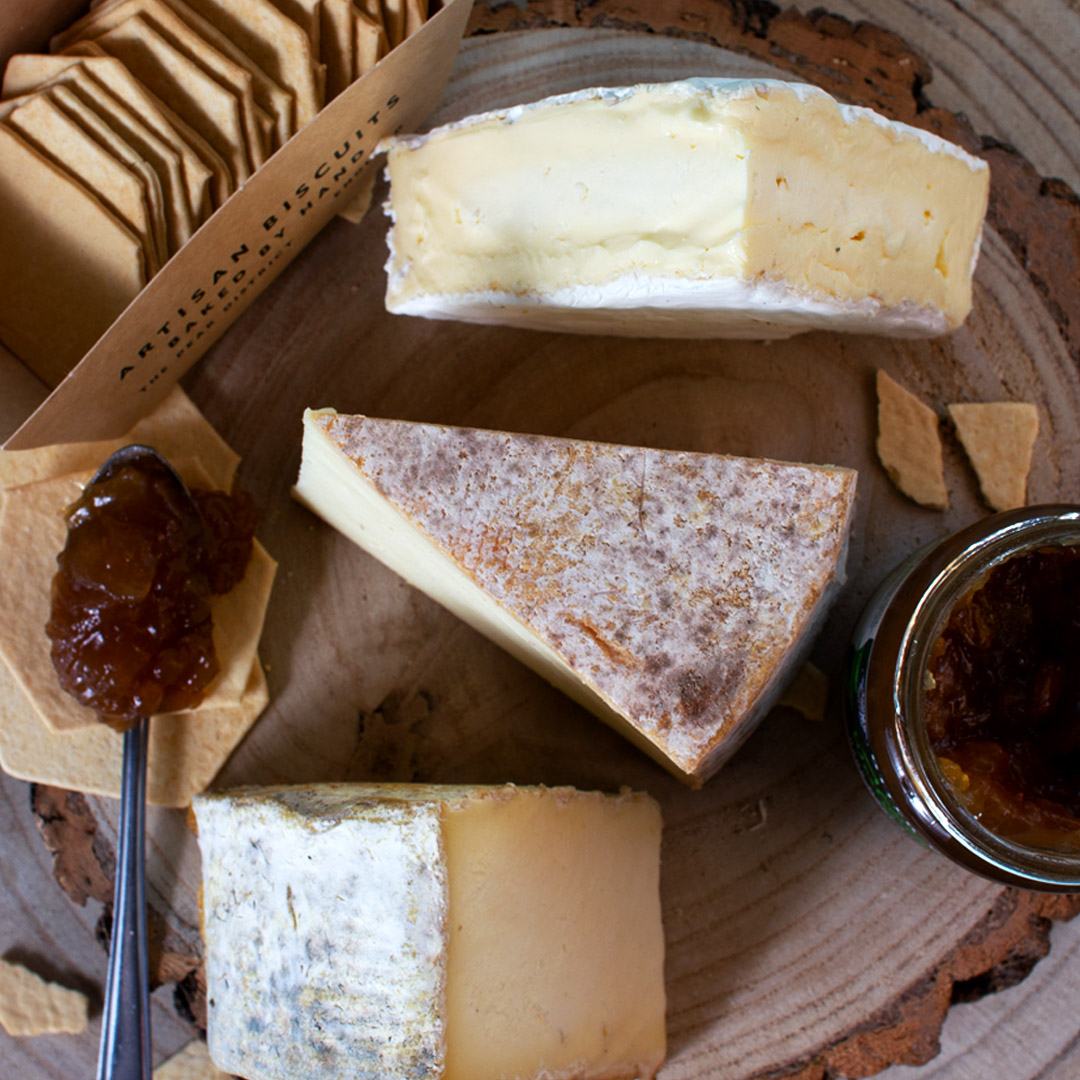Everyone loves a cheese board. Whether to be enjoyed at a special event or as part of a simple dinner with friends, they are an easy staple to put together.
But what cheeses should go on a cheese board? There are no strict rules when it comes to choosing cheeses, but there are some good practices to follow if you want your cheese board to appeal to everyone.
There is no limit to how creative you can get though, so have fun putting together your cheese board and don’t be afraid to expand your palate!
To help you get started, we have rounded up some must-have cheeses, as well as some of our favourite picks from our cheese counter:
Go for Variety
The key to creating a cheese board that really packs a punch is to aim for a contrast of textures, tastes, and shapes. Mild to strong, rounds and wedges, light against dark, soft and hard – an aesthetic impact is just as important here as a gustatory one.
Obviously, you can leave out any cheeses that you don’t like or which you think your guests won’t enjoy, but you should aim for a wide variety. Start by picking your favourites, then explore cheeses you or your guests might not have tried before.
The Cheese Categories
To pick a variety of cheeses, include ones from different families. A good rule of thumb is to include at least four cheeses on your board from each main category: soft, semi-soft, hard, and blue.
Soft Cheese
Made from cow, goat, or sheep’s milk, soft cheese can come from countries all around the world and has a characteristic tangy creaminess. Common soft cheeses include Brie, Mozzarella, Camembert, Feta, and Burrata.
Cheese Cuisine Picks:
- Baron Bigod – simply one of the best Bries being made in the UK, the Brie de Meaux style cheese is buttery and fresh with rich notes of mushroom. It pairs wonderfully with cranberry chutney and Pinor Noir or Chardonnay.
- Top of Form
- Organic Bix – an indulgent triple cream cheese and winner of best soft cheese at the British Cheese Awards.
- Cerney Ash – lemony fresh goat cheese with a thin vale of edible ash that creates a stunning contrast to white cheese on a cheese board.
Semi-Soft Cheese
Semi-soft cheeses are softer than hard cheese, but more solid than soft cheese. It has a typical soft and smooth consistency. Gouda, and Edam are popular semi-soft cheeses.
Cheese Cuisine Picks:
- Fat Cow – a nutty and sweet cheese that sits somewhere between Gruyere and Emmental in appearance and taste. It is best accompanied by aromatic whites like Pinot Blanc.
- Miss Muffet – a distinctive, continental style washed curd cheese from Cornwall, it has a grey mould rind and is ideal for those who love Tomme de Savoie.
- Truffle Gloucester – slightly crumbly with a thin layer of truffle through the center (much akin to the French cheese Morbier). The truffle and cheese compliment one another wonderfully.
Tip: it is always best to serve cheese at room temperature, so take your cheese out of the fridge thirty to sixty minutes ahead.
Hard Cheese
As the name suggests, hard cheese is firm with a salty and nutty flavour. Types of hard cheese includes Manchego, Parmigiano, Cheddar, and Parmesan.
Cheese Cuisine Picks:
- Haytor – based on a “gruyere style” recipe, the Devon cheese has a nutty, buttery taste that lies somewhere between cheddar and alpine style. It pairs well with a fruity Chardonnay.
- Apppleby’s Double Gloucester – the Cheshire Double Gloucester has buttery notes and a fruity finish.
- Gorwydd Caerphilly – ranking eleventh in the top sixteen at the 2019 World Cheese Awards, the Cheddar offers multiple flavours in one, with a sharper and rich centre compared to the earthy, mushroom flavour of the rind.
Blue Cheese
With its veins of blue and green edible mould, blue cheese has a distinctive sharp and salty taste with a creamy texture. Varieties of blue cheese include Stilton, Gorgonzola, and Roquefort.
Cheese Cuisine Picks:
- Harrogate Blue – winning Super Gold at the World Cheese Awards, the luxurious cheese is a creamy and complex blue made in Yorkshire.
- Mrs Bell’s Blue – made with Ewe’s milk, the award-winning cheese is rich, tangy, and more subtle than Roquefort. Pair with apricot chutney and a Riesling white.
- Dorset Blue Vinny – made from a three-hundred-year-old recipe, the cheese has been awarded a protected designation of origin. It has a strong, earthy taste with a slightly crumbly finish.
Order the Perfect Cheese with Cheese Cuisine
Whether you prefer a traditional Cheddar or a tangy Blue Cheese, we have all the cheeses you need to make the perfect cheeseboard.
We also offer a range of delicious accompaniments from chutneys to oatcakes, as well as a selection of wine to be paired with your favourite cheeses.
To make life easier, we even offer cheeseboards made up of our best-loved cheeses that are ideal for any occasion. Browse our selection today or email the team at hello@cheesecuisine.co.uk with any questions.
